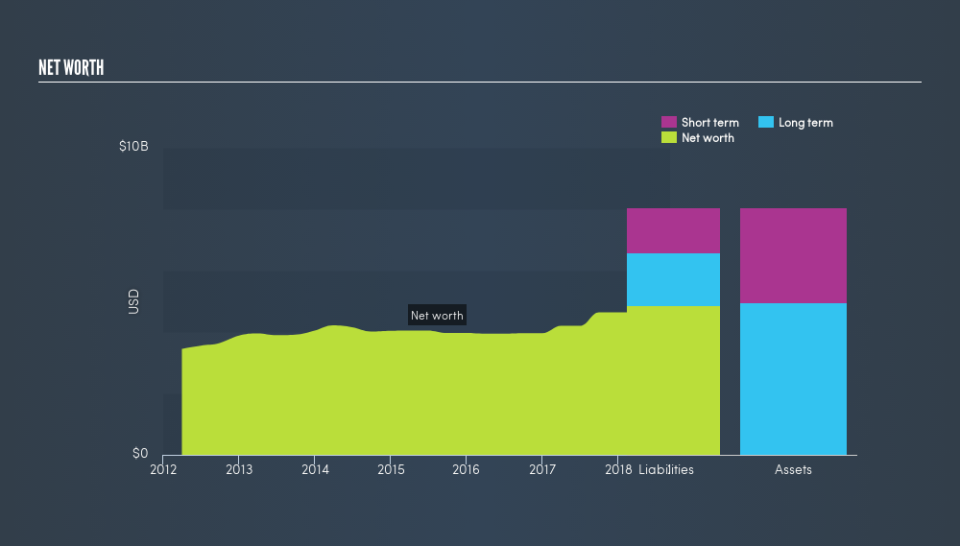How Much Money Does Smith & Nephew plc (LON:SN.) Make?

Want to participate in a research study? Help shape the future of investing tools and earn a $60 gift card!
If you are currently a shareholder in Smith & Nephew plc (LON:SN.), or considering investing in the stock, you need to examine how the business generates cash, and how it is reinvested. This difference directly flows down to how much the stock is worth. Operating in the industry, SN. is currently valued at UK£13b. Today we will examine SN.’s ability to generate cash flows, as well as the level of capital expenditure it is expected to incur over the next couple of years, which will result in how much money goes to you.
Check out our latest analysis for Smith & Nephew
Is Smith & Nephew generating enough cash?
Smith & Nephew’s free cash flow (FCF) is the level of cash flow the business generates from its operational activities, after it reinvests in the company as capital expenditure. This type of expense is needed for Smith & Nephew to continue to grow, or at least, maintain its current operations.
I will be analysing Smith & Nephew’s FCF by looking at its FCF yield and its operating cash flow growth. The yield will tell us whether the stock is generating enough cash to compensate for the risk investors take on by holding a single stock, which I will compare to the market index. The growth will proxy for sustainability levels of this cash generation.
Free Cash Flow = Operating Cash Flows – Net Capital Expenditure
Free Cash Flow Yield = Free Cash Flow / Enterprise Value
where Enterprise Value = Market Capitalisation + Net Debt
Smith & Nephew’s yield of 3.89% indicates its sub-standard capacity to generate cash, compared to the stock market index as a whole, accounting for the size differential. This means investors are taking on more concentrated risk on Smith & Nephew but are not being adequately rewarded for doing so.
Is Smith & Nephew's yield sustainable?
Does SN.’s future look brighter in terms of its ability to generate higher operating cash flows? This can be estimated by examining the trend of the company’s operating cash flow moving forward. In the next couple of years, the company is expected to grow its cash from operations at a double-digit rate of 46%, ramping up from its current levels of US$931m to US$1.4b in three years’ time. Although this seems impressive, breaking down into year-on-year growth rates, SN.'s operating cash flow growth is expected to decline from a rate of 33% in the upcoming year, to 6.8% by the end of the third year. However the overall picture seems encouraging, should capital expenditure levels maintain at an appropriate level.
Next Steps:
The company’s low yield relative to the market index means you are taking on more risk holding the single-stock Smith & Nephew as opposed to the diversified market portfolio, and being compensated for less. Though the high operating cash flow growth in the future could change this. Keep in mind that cash is only one aspect of investment analysis and there are other important fundamentals to assess. You should continue to research Smith & Nephew to get a better picture of the company by looking at:
Valuation: What is SN. worth today? Is the stock undervalued, even when its growth outlook is factored into its intrinsic value? The intrinsic value infographic in our free research report helps visualize whether SN. is currently mispriced by the market.
Management Team: An experienced management team on the helm increases our confidence in the business – take a look at who sits on Smith & Nephew’s board and the CEO’s back ground.
Other High-Performing Stocks: If you believe you should cushion your portfolio with something less risky, scroll through our free list of these great stocks here.
We aim to bring you long-term focused research analysis driven by fundamental data. Note that our analysis may not factor in the latest price-sensitive company announcements or qualitative material.
If you spot an error that warrants correction, please contact the editor at editorial-team@simplywallst.com. This article by Simply Wall St is general in nature. It does not constitute a recommendation to buy or sell any stock, and does not take account of your objectives, or your financial situation. Simply Wall St has no position in the stocks mentioned. Thank you for reading.

 Yahoo Finance
Yahoo Finance 
